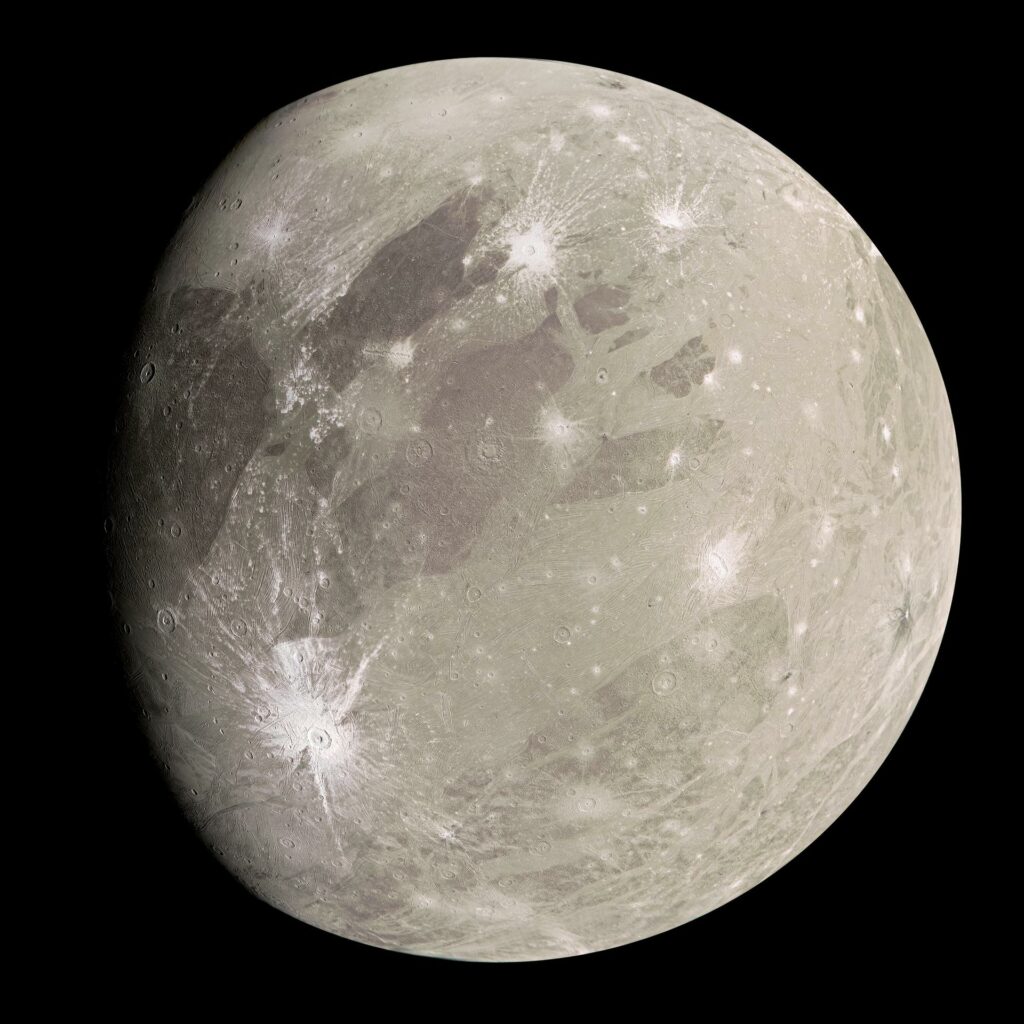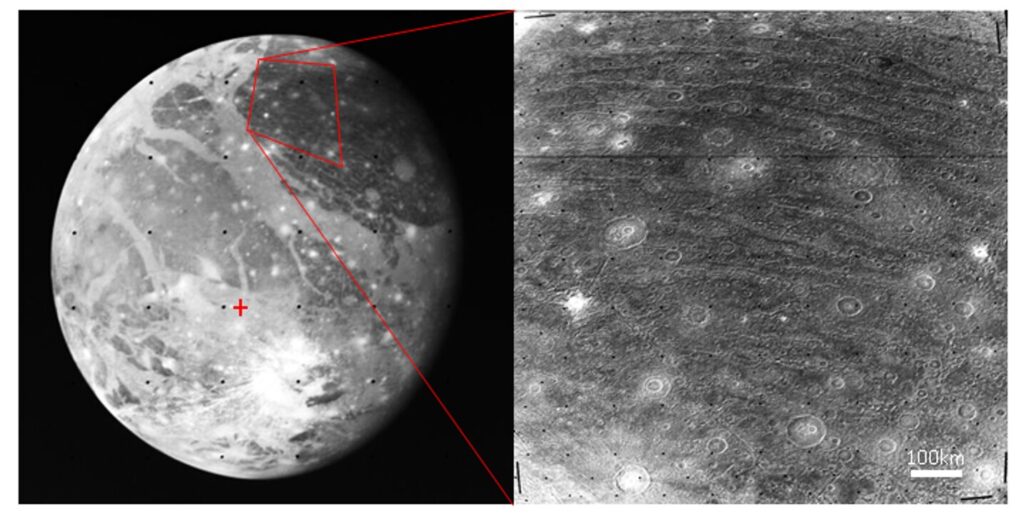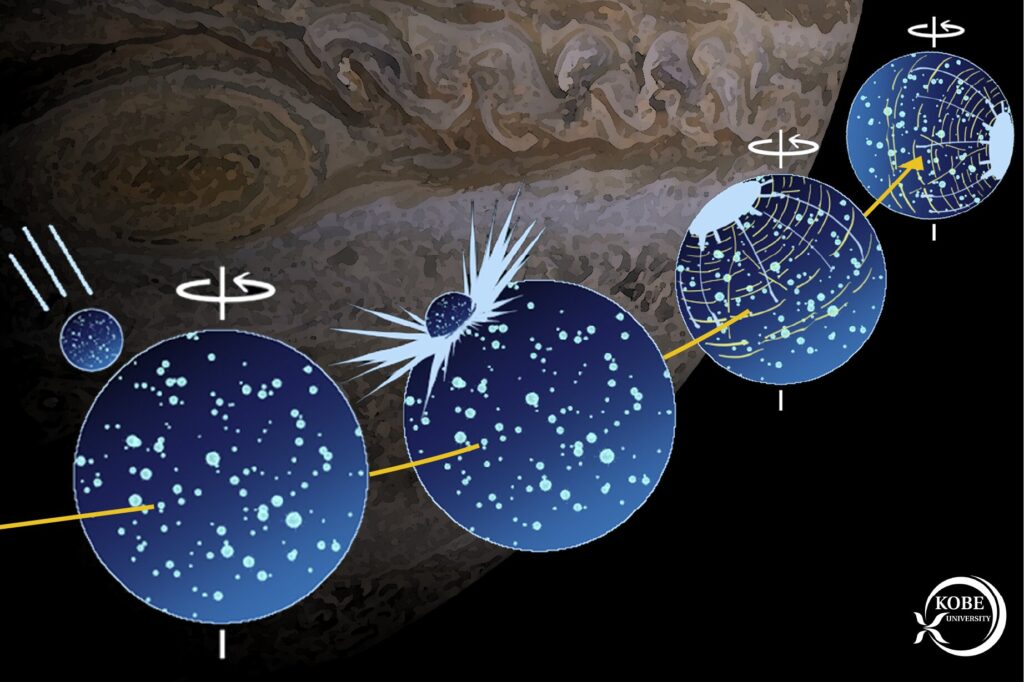About 4 billion years ago, a huge asteroid crashed into Jupiter’s moon Ganymede, causing its axis of rotation to shift. This is according to the results of a new study done by Japanese scientists.

Ganymede is the largest planetary moon in the Solar System. It is even larger than Mercury. Ganymede is interesting because it has its own magnetic field, and beneath its icy surface are oceans of liquid water, where conditions for the emergence of life may exist.
Like an overwhelming number of other moons, Ganymede is in a tidal lock. That is, it always faces Jupiter on the same side. In the 1980s, Voyager probes photographed Ganymede and found that much of the moon’s surface was covered with characteristic furrows that form concentric circles around a specific point. This led researchers to believe that they are the result of a major collision that occurred about 4 billion years ago. But until recently, its exact magnitude and impact on the moon were unknown.

Kobe University scientist Hirata Naoyuki decided to answer that question. He noticed that the alleged impact site is almost exactly on the farthest meridian from Jupiter. In this way, Ganymede resembles Pluto. Data from the New Horizons probe suggests that in the distant past, the dwarf planet underwent a huge collision that caused it to reorient itself.
Based on this assumption, Hirata performed a simulation of a collision that could have produced a similar reorientation of Ganymede. According to his data, the diameter of the asteroid that collided with the moon was about 300 kilometers. That’s about 20 times the size of the body that collided with Earth 66 million years ago and ended the age of the dinosaurs. The impact resulted in the formation of a transient crater 1400 to 1600 km in diameter (this is the name given to the cavity that forms immediately at the moment of impact before material settles in and around the crater).

The giant impact must have had a significant impact on the early evolution of Ganymede. But its thermal and structural effects on the interior of the moon are still completely unexplored. The JUICE mission can provide clarity on this issue. Ganymede is its final destination. If all goes well, the spacecraft will enter orbit around the moon in 2034 and study it for six months, sending back a lot of data that will help clarify surface features and internal structure.
According to Phys.org


